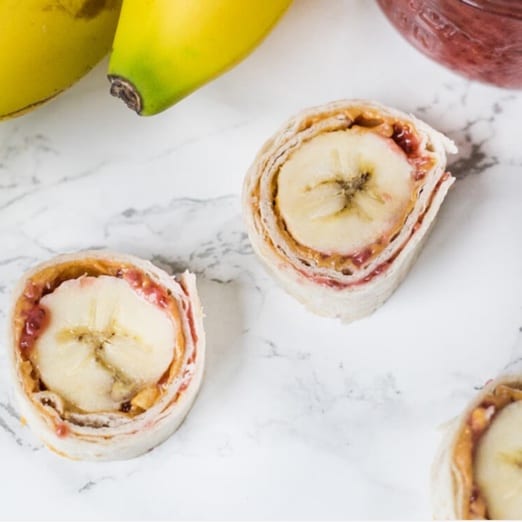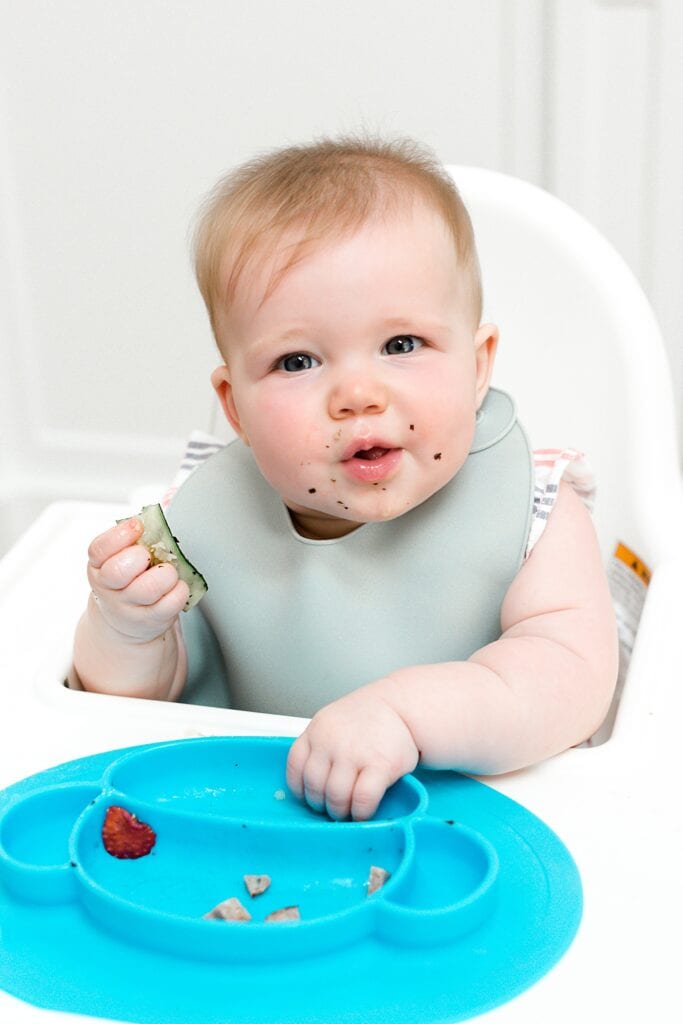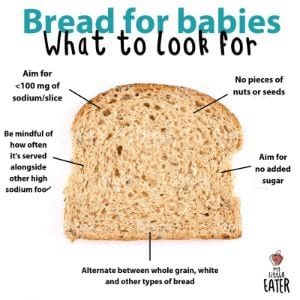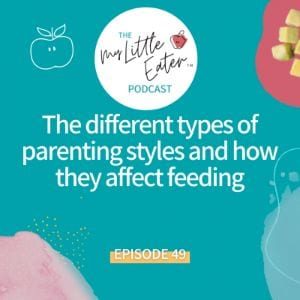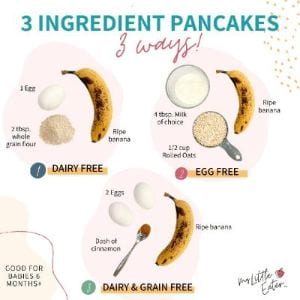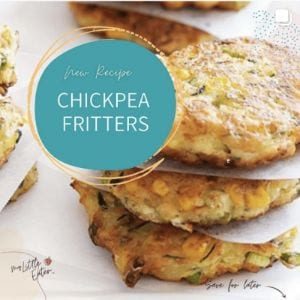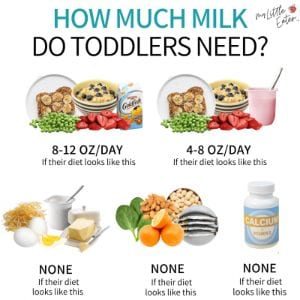![Main image for the article [Does My Child Need A Probiotic?]. Pictured is a toddler eating yogurt with a spoon.](https://mylittleeater.fixed-staging.co.uk/wp-content/uploads/2019/09/New-Blog-Post-Image-Size-6-300x300.png)
Disclaimer: All probiotic recommendations made in this post are not prescriptive nor individualized to your specific situation and needs. Always seek out the advice of your doctor and dietitian before proceeding with anything.
Probiotics.
You hear of them and see them advertised everywhere – your mom is taking one daily to treat her bloating, your doctor may have recommended one for your colicky baby, and the yogurt aisle in the grocery store is screaming about all the probiotics it contains. What’s all the hype? Is it worth giving your baby or toddler one? Let’s dive in!
What is a probiotic?
Probiotics are defined as live micro-organisms (a.k.a bacteria!) that survive in the digestive tract and promote gut health. We have trillions of bacteria living in our guts that are naturally existing – some “good” and some “bad”. The good bacteria keep the bad ones at bay, and strengthen the gut’s mucosal barrier so that foreign materials and germs cannot bind to it. They can also work by lowering the pH of the intestine (making it more acidic) so that it would be an unattainable environment for unfavourable materials and germs to live. In other words – having lots of good bacteria keeps us healthy! And even though the gut is constantly hosting new probiotics, it is important to ensure that the balance between the ‘good’ and ‘bad’ bacteria is not offset. In other words, we always want the ratio of ‘good’ to ‘bad’ to be very high.
What type of probiotics are good?
There are clearly lots of different types of probiotics, but what’s important is understanding that each specific strain (or specific variety within a general family of bacteria) has a specific benefit. Some have no proven benefit. The research on all this is still very new so we certainly don’t have the full picture yet, but it’s important to note that there’s no use in taking any probiotic for the sake of it if you don’t understand which has been clinically proven to have a positive effect and in what way.
In general, most of the research has shown that Bifidobacterium, Lactobacillus and Saccharomyces are a few general family groups of bacteria that have been shown to be naturally occurring in the body and seem to have beneficial properties. But again, what’s important is the specific strain within each of these general categories that matters when deciding which one to take or give your child.
How do we obtain good bacteria?
Right from birth, an infant’s gut will begin to populate with different bacteria (making up their “microflora” or specific population of bacteria in their gut). Different factors, such as genetics, the type of delivery (caesarean or vaginal), the infant’s diet (breastmilk or formula), and other factors such as the environment and presence of antibiotics, influence the composition of gut microflora.
For example, according to a study done in 2009, infants acquired different types of bacteria during their first months via breastfed milk compared to formula feedings. Those infants that were fed mom’s milk had a high level of Bifidobacterium species that dominate in the gut while on the other hand, formula fed infants have more Enterobacter microbes in the gut. The difference was due to the makeup of the breast milk, therefore influencing the makeup of their general microflora.
Now, you can get some more good probiotics in via different supplemental forms – naturally occurring in some foods, or, via supplements (some available in chews, powder or drops form even). The thing is, these supplemental probiotics are not there to stay in your gut forever. They are somewhat water soluble, which means they enter and then they leave. Millions of probiotics are lost in one simple diaper change!
This means, that as far as we know, in order to see any benefits from supplemental probiotics, we need to be consistently giving them to our children. Does this mean we should all be handing out daily probiotics? No. In fact, most kids don’t need one at all. However, in certain circumstances where environmental or medical changes may affect the colonization of good vs bad probiotics, help from supplements or food can be warranted. Let’s take a look at which circumstances may warrant a probiotic.
When would my child need a probiotic supplement?
If your child has been sick for an extended period of time, has digestive issues, or is taking antibiotics, this may be an especially good time to introduce a probiotic supplement into your child’s routine. Remember, the health benefits of probiotics are strain specific (meaning a specific type of bacteria must be present in a specific quantity). Furthermore, probiotic supplements have not been proven to be completely safe for the immunocompromised (e.g. premature babies). Always be sure to consult a doctor or dietitian before giving your baby or child any probiotics supplements. They can help you determine the best one to take under specific conditions.
Let’s go through some of the main scenarios when a probiotic may be warranted for baby/toddler below.
After a round of antibiotics
Sometimes medication our babies or toddlers need to take, such as antibiotics, can upset the gut’s balance by wiping out all the bacteria – not only the bad stuff. This can significantly decrease the body’s ability to protect itself against germs and unwanted foreign materials (intruders!) – meaning your toddlers are at risk for things like antibiotic-associated diarrhea. So, in times like these, a probiotic containing Lactobaciallus rhamnosus GG and Saccharomyces boulardii is often recommended to prevent ever developing any antibiotic-associated diarrhea. Note that while most probiotics should be taken after taking the antibiotics (so that they won’t be affected by the antibiotic), one type called Florastor can be taken during antibiotic treatment.
Acute diarrhea (not related to antibiotic use)
Sometimes your child will just have diarrhea for a variety of reasons (most likely due to a viral or bacterial infection). Research has shown that there can be a reduction of stool frequency and duration of diarrhea experienced(by about 1 day) in children when probiotics containing Lactobacillus rhamnosus GG and Saccharomyces boulardii are taken.
Constipation
The effects that probiotics have on constipation are heavily debated and research is not clear on an answer, though some studies have shown that Lactobacillus reuteri Protectis was more effective than placebo in improving the frequency of bowel movements in adults and children with functional constipation.
Eczema
It’s been shown that the type of bacteria found in the gut is different in those with eczema versus those without (such as lower bifidobacteria presence with eczema). While the research isn’t 100% clear, supplementation with Lactobacillus rhamnosus GG has been promising in showing a reduction in the severity of presence of eczema.
Functional abdominal pain
Functional abdominal pain (which may or may not be associated with diarrhea, constipation, bloating) has been shown to have improvements in severity of pain experienced with L. reuteri DSM 17938 (and some studies show Lactobacillus rhamnosus LGG can have benefits as well).
Colic
Research shows that a specific bacterial strain called Lactobacillus reuteri 17938 has been associated with decreased crying spells in exclusively breastfed infants.
General Protection Against Commonly Infectious Diseases
While a general probiotic isn’t necessary in most cases (especially when eating a diet rich in probiotic foods as is explained in the next section), you can help protect your child against commonly infectious diseases such as upper respiratory infections, pneumonia, stomach flu and more. Remember, this is not guaranteed…but use of certain general probiotics may be beneficial in the prevention and management of upper respiratory, bacterial and viral infections.
OK…make this easier for me…which product contains the right probiotics?
I’ve got your back. I’ve put some of my most recommended probiotic products right here in a nifty table for you to compare and decide which probiotic you many need to offer under different circumstances. Remember – this is not a prescription – just clarifying for you which brand contains what probiotic most beneficial for the situation. Check with your doctor or dietitian on recommended dosages depending on the age of your child. For much more detailed information on these and other supplements required or recommended for toddler for general and prescriptive health, check out my Feeding Toddlers online course for a full lesson on supplements and nutrients of concern!
What about foods containing probiotics?
Many foods contain naturally occurring probiotics that give us an extra boost of good bacteria for general digestive health and immune function. Day to day, it’s great to be eating a variety of these foods and giving these foods to your little one. In the world we live in, it’s much harder to be getting good bacteria into our systems, especially as we are no longer accustomed to eating things like fermented and cultured foods (as we once did before refrigerators existed). To top it off, the use of antibacterial hand soaps and sanitizers, being outside less, and even consuming antibiotic containing meats, decreases our exposure to healthy bacteria.. That’s why getting back to regularly consuming more of these probiotic rich foods is always a good idea.
One of the most familiar probiotic containing foods is yogurt. Look for ones with “live active cultures” in the ingredient list. Keep in mind that usually the concentration of probiotics found in yogurt isn’t enough to effectively treat a specific issue, but regular consumption of this and other probiotic foods will be good for general health and immunity. Other fermented dairy products such as kefir (a fermented milk drink) also contain a myriad of probiotics that you can try in place of milk over cereal, or in a smoothie! Non-dairy alternatives such as soy milk contain probiotics as well. Beyond this, fermented foods such as sauerkraut, miso, kimchi, tempeh, and kombucha are all delicious and excellent sources of probiotics. Some of the probiotic-containing foods listed above can be easily made at home, and also tweaked to your and your child’s liking!
Kid-Chi – Kimchi for Kids
This recipe, found at mountainfeed.com, adopts a kimchi recipe and makes it a little less spicy, something many kids will be sure to appreciate! It includes many ingredients, most of which you will probably already have on hand. It is a quick recipe to make, however needs 7 hands-off days to ferment.
Give it a try!
Ingredients
- 2 lbs napa cabbage, cut in ¼ inch slices
- 2 tsp. sea salt
- 2 medium carrots, peeled and coined
- 1 tsp ginger, minced
- 1 tsp garlic, minced
What to do
- Core and cut cabbage
- Massage cabbage with sea salt, about 2 minutes
- Peel and coin carrots
- Mince fresh ginger and garlic
- Add remaining ingredients to massaged cabbage and massage again, about 2-5 minutes or until juice can be easily squeezed out of the vegetables
- Pack mixture into a jar while pressing down lightly until the brine rises and covers the vegetables completely
- Secure lid on jar and store out of the sun in room temperature for 7 days to allow for fermentation.
- Store kimchi in the fridge once opened for two months!



